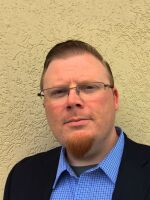After a year of online learning, many students and families are all too happy to ditch the laptops for a summer break and fully return to school in person next year, in whatever form that takes.
But for some multinational families, online schooling offered a unique opportunity to take learning on the road and be with loved ones abroad.
“We have wanted to give them an opportunity to not just experience special holidays or summer vacations [in Finland], but to really get more into the culture and everyday life,” said Jenni Carney, a native Finn who has been in the United States for the last 15 years.
She lives in the Cleveland-area with her American husband and two children, who are 11 and 13.
As the pandemic hit Northeast Ohio in earnest, the then seventh and fifth graders faced online classes with their parochial school, like so many students across the country. But Carney said her family was fortunate to be able to manage it all – her work in international relations and online learning.
“I was able to also transition to working from home, so I was able to support the kids’ school here,” she said, adding that having older kids was also helpful. The middle schoolers could handle online learning relatively independently, with support.
Carney’s husband grew up in Northeast Ohio, so they have family in the region, but the pandemic began to prompt a lot of thinking about the Finnish side of their family, too. Carney said in normal times, she tried to get to Europe every year.
“Finland is pretty dark and cold in the winter, so we tend to prefer to go in the summer months,” she said, laughing. “But it really depends on what else is going on.”
Initially, when a pandemic was what was going on, there was not a plan for a trip – yet.
“It seemed like online school or remote learning would stay with us for a long time, and this idea started to percolate that we could do school and work from anywhere in the world,” Carney said.
If you’re logging into math class from the kitchen table, could that table be in Helsinki?
Carney's family decided the answer was yes.
Her husband could not work remotely, so he would stay behind, but everyone else would spend August to December in Finland. That’s seven hours ahead of Cleveland, meaning the school day was now 3 to 9:30 p.m.
“Well, the kids really enjoyed the fact that they were able to sleep in mornings, and they wouldn’t have to get ready at the crack of dawn," she said, laughing. “I can kind of do a lot of the work at my own pace, so I would try to schedule my work day at the same time that the kids were at school.”
Carney said she faced a midnight meeting or two while coordinating with colleagues in Cleveland, but logistically and technologically, it worked.
“No, everything worked really well. I actually had better connection from Finland than I did when I was working remotely in Cleveland," she said.
Finland was not untouched by the pandemic, of course, but the situation there looked a lot less severe when Carney and her children landed in August.
Data collected by Johns Hopkins University shows Finland had a seven-day average of just 21 cases on Aug 31, 2020. That’s compared to a seven-day average of 41,600 on the same day in the United States.
“It was almost like we had a Get Out of Jail Free card, as in, we were able to experience the world as we used to know it, almost,” Carney said.
That meant they could see family, use their Finnish language skills, be embedded in the culture, and the kids could even play sports with other Finnish kids.
Cases in Finland did begin to spike in October; Carney said there were mask requirements, and sports were paused. It wasn’t a full-on lockdown, and not as bad as in the United States, but yes: still a pandemic.
Still, Carney recognizes all of it as an extraordinary experience during an extraordinary time: “When you live between two cultures and two countries, there’s always part of your heart that is somewhere else. I think that has become more apparent for the kids as well through this experience. But they were also really happy to come back home and see their friends and get back into their usual life. Or whatever that means now, the current normal.”
Copyright 2021 90.3 WCPN ideastream. To see more, visit 90.3 WCPN ideastream.

Learning Curve is a statewide media collaborative focusing on the challenges and opportunities facing K-12 public education in Ohio.
Our partners include WCPN, WOSU, WVXU, WYSO and The Devil Strip.




